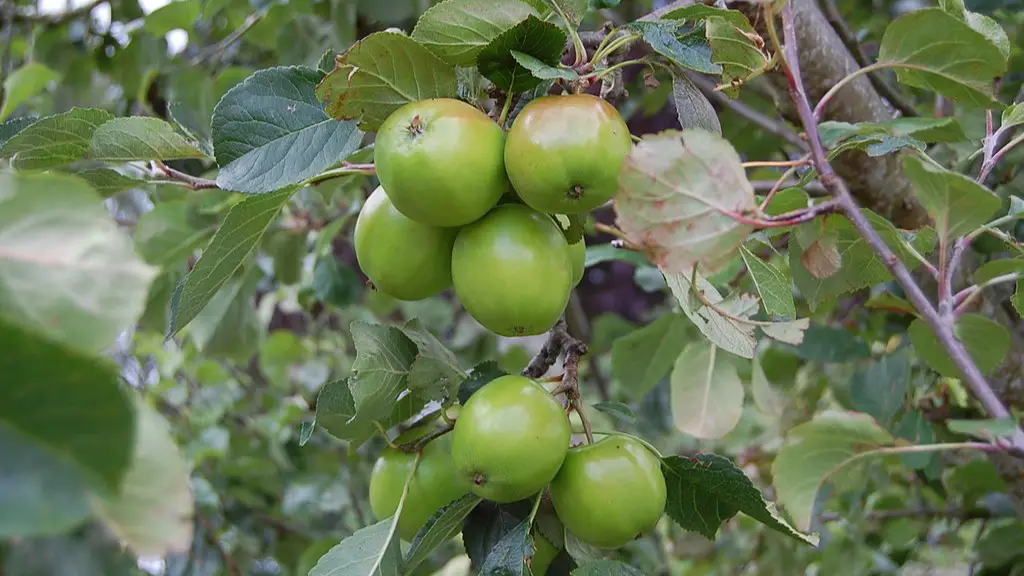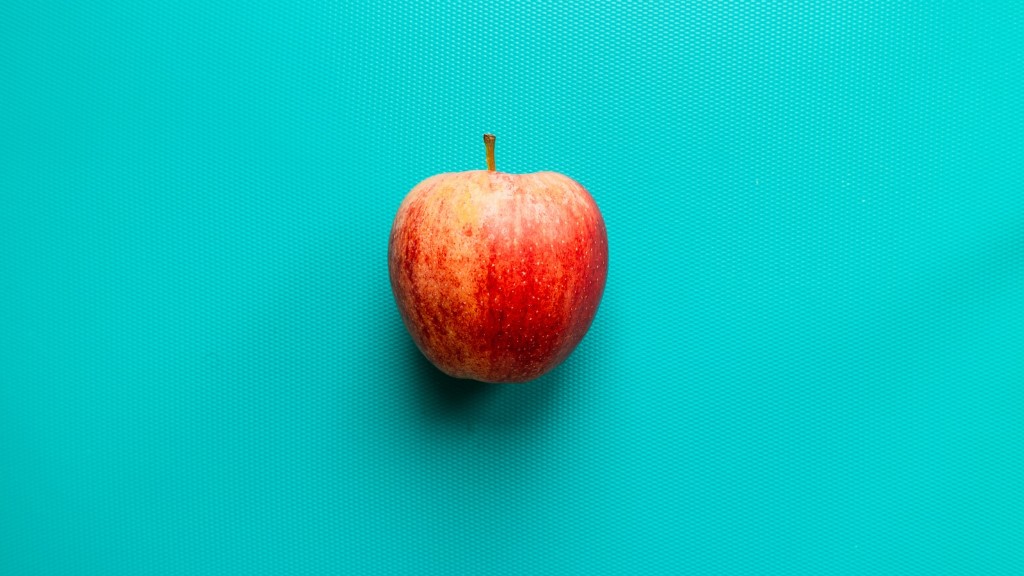Avocados are a delicious and versatile fruit, hailed by nutrition experts for their high nutrient content and impressive health benefits. But do you know how many avocados a single avocado tree can produce?There is no single answer to this question because there is much variation in terms of how many avocados an avocado tree will produce in a given season. It all depends on the climate, soil type, age of the tree and other environmental factors. So, let’s explore these variables and get a better understanding of the potential avocado yield.
The age of the tree is an important factor in determining how many avocados a tree can produce. Generally, the older the tree, the more fruit it will bear. Younger trees have a much lower yield because they produce fewer blooms and therefore fewer avocados. It usually takes five to six years for an avocado tree to reach its full potential in terms of fruit production.
Climate also plays an important role in determining how many avocados a tree can produce. Some areas of the world have perfect climatic conditions for avocado growth and yield numerous avocados. For example, the Mediterranean region and California are two areas that are renowned for their high-quality avocados. On the other hand, some areas lack the required warm temperatures for avocado trees to flourish and consequently the avocado yields are significantly lower.
Besides the climate, the soil type and fertilization of the tree also have a significant impact on an avocado tree’s yield. Avocado trees require well-drained, nutrient-rich soil to produce large fruit. The presence of other trees or buildings in the vicinity can also affect the health of the avocado tree and reduce its potential yield. Good care and maintenance of the tree is essential for optimal production. Watering and fertilizing the tree regularly are both important steps in ensuring maximum yields.
Experts suggest that a full-grown tree grown in an optimal environment can easily produce between 200 and 500 avocados in a single season. But this number can be significantly higher or lower depending on the climate, age and health of the tree.
It is important to note that most of the avocados produced by a single tree will not be ready to harvest at the same time. Instead, the tree will produce a few avocados each month, with the majority of the harvest occurring during the peak months. While the yields will vary based on the climate and tree health, a single tree can easily produce enough avocados to last you the whole year.
Climate Zones
When it comes to avocado tree production, the climate plays a pivotal role. Certain places in the world have ideal climates for avocado trees, while others lack the temperature conditions necessary for optimal growth. The optimal temperature range for avocado production is between 15 and 25 degree Celsius, with a relatively dry summer.
Areas with these climatic conditions experience higher yields and better quality fruits, while areas that fall outside of this ideal climate range tend to struggle with lower yields. California, Mexico and the Mediterranean are renowned for their high quality avocados thanks to their respective climates, while some parts of Africa and Asia lack the temperatures or dryness required for good production.
It is important to note that climate conditions are not the only factors that determine how many avocados a tree can produce. The age and health of the tree as well as soil fertility also play a role in overall production.
Pruning and Training
Avocado trees do not generally require special pruning or training, however proper care and maintenance can significantly improve their overall production. Pruning an avocado tree is done for aesthetic purposes and to reduce the risk of disease. A tree that is pruned regularly is less likely to suffer from pest infestations and mold growth.
Training an avocado tree is also important for effective yield, as it encourages the tree to produce even and balanced growth. Training involves tying the branches to a central wire or stake and keeping them out of reach of humans and other animals that may damage or eat the fruit.
For optimal production, avocado trees should also be fertilized regularly. Because it is a fruit tree, it needs proper nutrients to develop strong and healthy fruit. Fertilizers that are specific for avocado trees and high in nitrogen are ideal as they help the tree to produce more fruit.
Regular check-ups are also recommended to make sure the tree is healthy and free from pests. Avocado pests and diseases can significantly reduce the potential yield of a tree and trigger a range of problems such as leaf damage and fruit loss.
Harvesting
When it comes to harvesting avocados, timing is key. Most avocado varieties cannot be harvested until they are fully ripe and ready to eat. If you pick them too soon, they will not ripen correctly and will have a bitter taste. If you wait too long, the avocado will be over-ripe and not very appetizing.
To ensure that you harvest only ripe avocados, you should regularly check the tree for mature fruits. Look for avocados that are dark green in color and feel slightly soft when you squeeze them. If the tree has more than 50 avocados that are ready for harvesting, you should harvest them all as any unharvested avocados will drop to the ground and become bruised or rotten.
Once you’ve harvested the avocados, you should store them in a cool, dry place. Make sure to keep them away from direct sunlight and high temperatures, as this may cause the avocados to turn brown or spoil quickly. With proper handling and storage, ripe avocados can last up to three weeks.
Pest Control
Pest control is crucial for effective avocado production. Common pests of avocado trees include mites, scales, parrots, fruit flies and weevils. These pests can damage the leaves and fruit of the tree, leading to fewer avocados being produced.
To prevent pest infestations, it is important to regularly inspect the tree for any signs of damage and treat the tree with insecticides if necessary. Natural pest control methods such as adding predators and planting companion plants can also be used to help reduce insect damage.
Other methods for controlling pests include removing infected leaves, regularly monitoring the tree and using traps. Traps are inexpensive and highly effective in trapping and controlling pests such as the parrot. This method can be used in combination with insecticides for maximum pest control.
It is important to note that pests are not the only threat to an avocado tree’s yield. Diseases such as anthracnose and root rot can also cause damage and reduce an avocado tree’s potential yield.
Nutrition and Health Benefits
Avocados are nutritional powerhouses, packed with essential vitamins and minerals. They contain healthy fats that are beneficial for heart health and can help reduce cholesterol levels. They are also a great source of dietary fiber, which plays an important role in digestive health.
The nutrient content of avocados can vary based on species, ripeness and growing environment. Generally, they are high in protein, carbohydrates, fats and fiber as well as vitamins B, C, E and K. They are also rich in minerals such as potassium, calcium and magnesium.
The health benefits of avocados are far-reaching and can help to improve overall health and wellbeing. Studies have shown that regular consumption of avocados can help to reduce the risk of certain chronic illnesses, improve vision and aid in weight management.
Avocados are not just nutritious but also delicious. Whether you eat them sliced, mashed, or in guacamole, avocados are a great way to get your daily dose of healthy fats and essential vitamins and minerals.
Conclusion
In conclusion, how many avocados a single tree can produce is variable and depends on factors such as climate, soil type, age of the tree and overall health. Generally, a full-grown tree grown in an optimal environment can produce between 200 and 500 avocados in a single season. Avocados are highly nutritious and provide a variety of health benefits that are essential for optimal wellbeing. Lastly, proper care and maintenance of an avocado tree is essential to ensure maximum yields.


